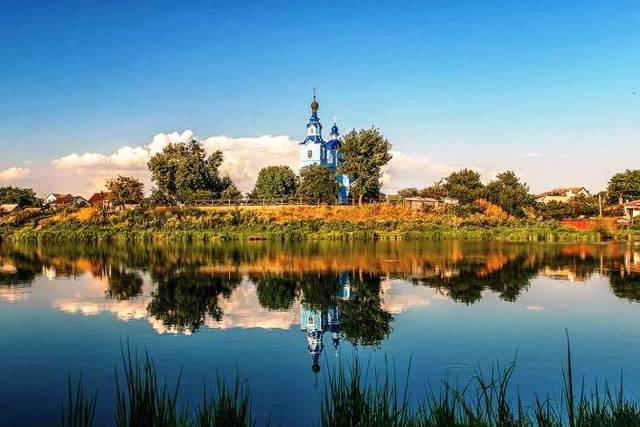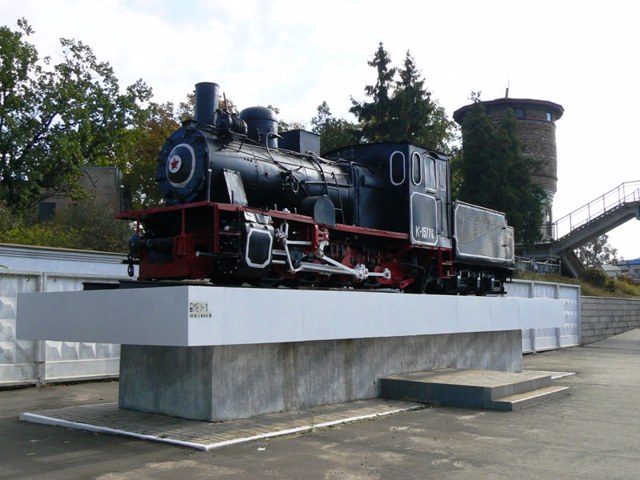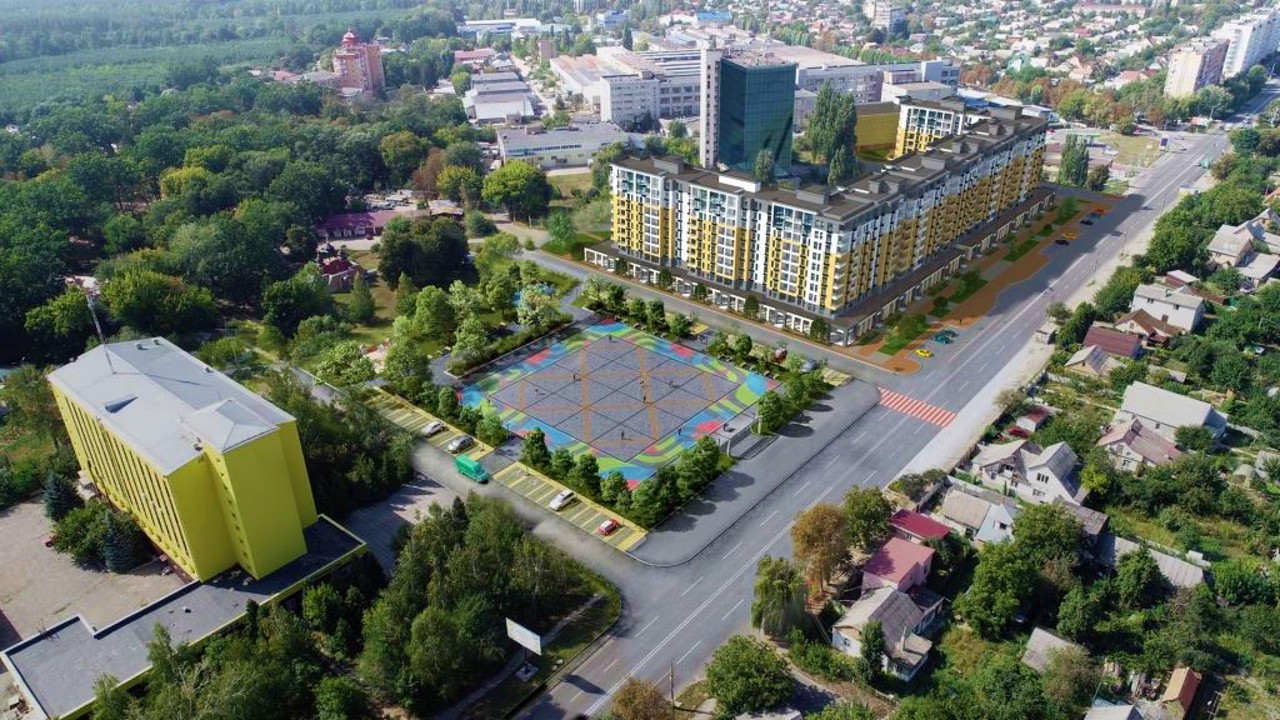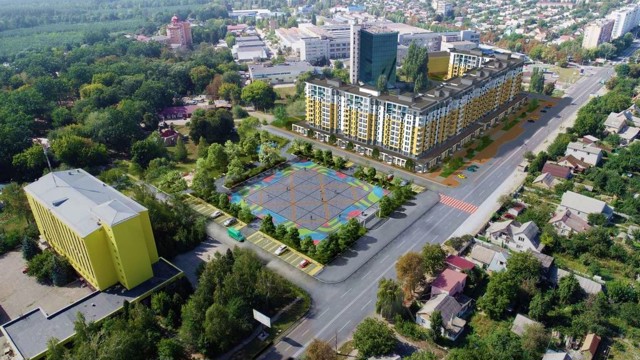Functional temporarily unavailable
General information about Boiarka
The city of Boiarka on the Prytvarka River is located 10 kilometers northwest of Kyiv.
During the times of Kyivan Rus, there was a Slavic settlement here - Peretvorye (Peretvorka), which was one of the strongholds of Serpent's Shafts. From the 16th century, it is mentioned as the village of Budayivka in the property of Prince Vasyl-Kostyantyn Ostrozky. From the beginning of the 17th century, the village belonged to the Polish-Lithuanian princes of Koretsky, who disputed these lands with the Michael Monastery. Later it became the property of the Kyiv-Pechersk Lavra.
The development in the 19th century was connected with the construction of the Kyiv-Fastiv railway, when a country settlement began to grow near the "Boiarka" station (that's what the current ...
The city of Boiarka on the Prytvarka River is located 10 kilometers northwest of Kyiv.
During the times of Kyivan Rus, there was a Slavic settlement here - Peretvorye (Peretvorka), which was one of the strongholds of Serpent's Shafts. From the 16th century, it is mentioned as the village of Budayivka in the property of Prince Vasyl-Kostyantyn Ostrozky. From the beginning of the 17th century, the village belonged to the Polish-Lithuanian princes of Koretsky, who disputed these lands with the Michael Monastery. Later it became the property of the Kyiv-Pechersk Lavra.
The development in the 19th century was connected with the construction of the Kyiv-Fastiv railway, when a country settlement began to grow near the "Boiarka" station (that's what the current village of Tarasivka was called), which later merged with Budayivka.
Saint Michael's Church was built in 1901 on the ramparts of the Slavic settlement.
The events of 1921, when the Kyiv Komsomol members built a narrow-gauge railway in Boiarka to provide firewood to freezing Kyiv, are described by Mykola Ostrovsky in the novel "How Steel Was Tempered". A monument to the literary hero of his time was erected in front of the school building, built in the style of Ukrainian Art Nouveau at the beginning of the 20th century (dismantled at the request of the Law on Decommunization), and a monument to the author - near the local history museum. There is also a monument to the builders of the narrow-gauge railway and a monument to the steam locomotive K-15776 "Kukushka".
Місто Боярка на річці Притварка розташоване в 10 кілометрах на північний захід від Києва.
За часів Київської Русі тут існувало слов'янське городище - Перетвор'є (Перетворка), що було одним з опорних пунктів Змієвих валів. З XVI сторіччя згадується як село Будаївка у власності князя Василя-Костянтина Острозького. З початку XVII століття село належало польсько-литовським князям Корецьким, які сперечалися за ці землі з Михайлівським монастирем. Пізніше перейшло у власність Києво-Печерської лаври.
Розвиток в XIX столітті пов'язаний з будівництвом залізниці Київ - Фастів, коли біля станції "Боярка" (так називалося нинішнє село Тарасівка) почало рости дачне селище, яке злилося потім з Бу ...
Місто Боярка на річці Притварка розташоване в 10 кілометрах на північний захід від Києва.
За часів Київської Русі тут існувало слов'янське городище - Перетвор'є (Перетворка), що було одним з опорних пунктів Змієвих валів. З XVI сторіччя згадується як село Будаївка у власності князя Василя-Костянтина Острозького. З початку XVII століття село належало польсько-литовським князям Корецьким, які сперечалися за ці землі з Михайлівським монастирем. Пізніше перейшло у власність Києво-Печерської лаври.
Розвиток в XIX столітті пов'язаний з будівництвом залізниці Київ - Фастів, коли біля станції "Боярка" (так називалося нинішнє село Тарасівка) почало рости дачне селище, яке злилося потім з Будаївкою.
Михайлівська церква побудована в 1901 році на валах слов'янського городища.
Події 1921 року, коли київські комсомольці будували в Боярці вузькоколійку для забезпечення дровами замерзаючого Києва, описані Миколою Островським в романі "Як гартувалася сталь". Пам'ятник літературному герою свого часу було встановлено перед будівлею школи, побудованій в стилі українського модерну на початку XX століття (демонтований на вимогу Закону про декомунізацію), А пам'ятник автору - біля краєзнавчого музею. Також є пам'ятник будівельникам вузькоколійки і пам'ятник паровозу К-15776 "Кукушка".
Сплануй своє перебування у Boiarka
What to see and where to go in Boiarka
Tourist attractions and museums of Boiarka

Saint Michael's Church
Temple , Architecture
The wooden church of Saint Archangel Michael in Boiarka was built in 1901 on the ramparts of the Slavic settlement "Transformation", which is also called the Budayivka settlement after the old name of Boiarka - Budayivka.
From 1756 to 1894, the churches of Saint Joan the Myrrh-bearing, Resurrection of Christ, and Archangel Michael were located on this site, which were later destroyed. After the opening of the railway station "Boiarka" and with the growth of the village, the project of the wooden church by the architect Mykola Hordenin was approved.
With the advent of Soviet power, the Saint Michael's Church was closed, but remained intact, and during the Second World War it became active again.
The church houses the icon of the Savior, which is associated with a miracle - in 2005, an imprint of its outline appeared on the glass covering the icon.
Near Saint Michael's Church, there is an ancient church cemetery where the Ukrainian writer Volodymyr Samiylenko is buried.

School No. 2
Architecture
The building of the Boiarka Secondary School No. 2 was built in 1911 as an orphanage at the expense of patron Flavian Vasylevskyi. It was one of the first brick buildings in the then country village of Boiarka.
The red brick building is made in the Art Nouveau style according to the project of the architect Dorohanevskyi. Thanks to its decoration and high tower, the building looks like a fairy-tale terem, a medieval castle, and a majestic cathedral at the same time.
In November-December 1918, the headquarters of the Ukrainian snipers under the command of Yevhen Konovalets was located in the school (a memorial plaque was installed).
In 1921, when the railway school was located in the building, it was home to a brigade of Komsomol members building the boyar narrow-gauge railway, and among them was the future writer Mykola Ostrovskyi, who later described these events in the novel "How Steel Was Tempered". In this connection, Soviet propaganda positioned Boyarka as a "city of Komsomol glory", a monument to Pavka Korchagin, the hero of the novel, was erected in front of the school building. In 2018, the monument was moved to the neighboring territory of the Boiarka Museum of Local Lore. and in 2024 it was dismantled.

Boiarka Local Lore Museum
Museum / gallery
The Boiarka Local Lore Museum was opened in 1974 as the Mykola Ostrovsky Literary Memorial Museum in honor of the 70th anniversary of the Soviet writer-propagandist. Its collection includes more than 15,000 objects that constitute the historical and cultural heritage of the region..
The museum is located in a separate building on the territory of the local school, in the building of which Ostrovsky lived in 1921 among the Komsomol brigade of boyar narrow gauge construction workers.
Although in 1992 the Boiarka Local Lore Museum was repurposed as a museum of local history, the basis of its exposition is still made up of things related to Ostrovsky's work: documents, photographs, personal belongings, first editions of his book "How Steel Was Tempered", etc.
A significant place in the exposition is occupied by the works of artists Poliakova and Hryhoryev. The museum holds more than a thousand original works by these artists.

Folomin Summer Cottage
Architecture
An old wooden summer cottage, located on the territory of the Kyiv Regional Children's Hospital in Boiarka, is one of the architectural landmarks of the city. Built at the end of the 19th century by the Kyiv merchant Folomin for summer recreation. It is part of the preserved historical buildings of the country town of the late 19th - early 20th centuries.
In those days, the village around the Boiarka railway station was a famous summer resort, where more than 10 thousand Kyivans came every summer. Kyiv's intelligentsia also rested here, including such prominent figures as Mykhailo Hrushevsky, Mykola Lysenko, Oleksandr Konysky, Maria Zankovetska, Sholom-Aleichem, Heorhii Kistiakivsky and many others. It is from that time that some of the main streets of Boiarka have names associated with Kyiv toponyms.
The restoration and revitalization of the summer house on the territory of the Boiarka children's hospital is being taken care of by the "Boiarka Hromada Fund", which plans to turn it into a public space "Dacha" within the framework of the project "New life of the old summer house".

Steam Locomotive Cuckoo
Monument
The unique steam locomotive K-15776 Cuckoo ("Zozulya"), which is permanently parked at the "Boiarka" railway station, is considered a symbol of the city.
This is one of the monuments to the boyar narrow-gauge railway, thanks to which Kyiv was saved from freezing in the cold winter of 1921-1922. Such steam locomotives transported firewood harvested in nearby forests.
The "Cuckoo" steam locomotive in Boyarka is considered the only representative of this series that has survived in Ukraine.
Boiarka in news and blogs
Reviews Boiarka
Geographical information about Boiarka
| {{itemKey}} | {{itemValue}} |
|---|---|
| Region |
Kyiv |














